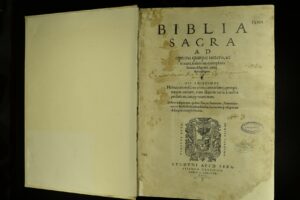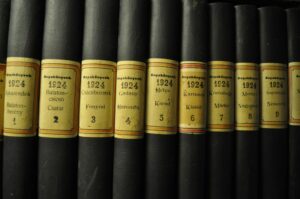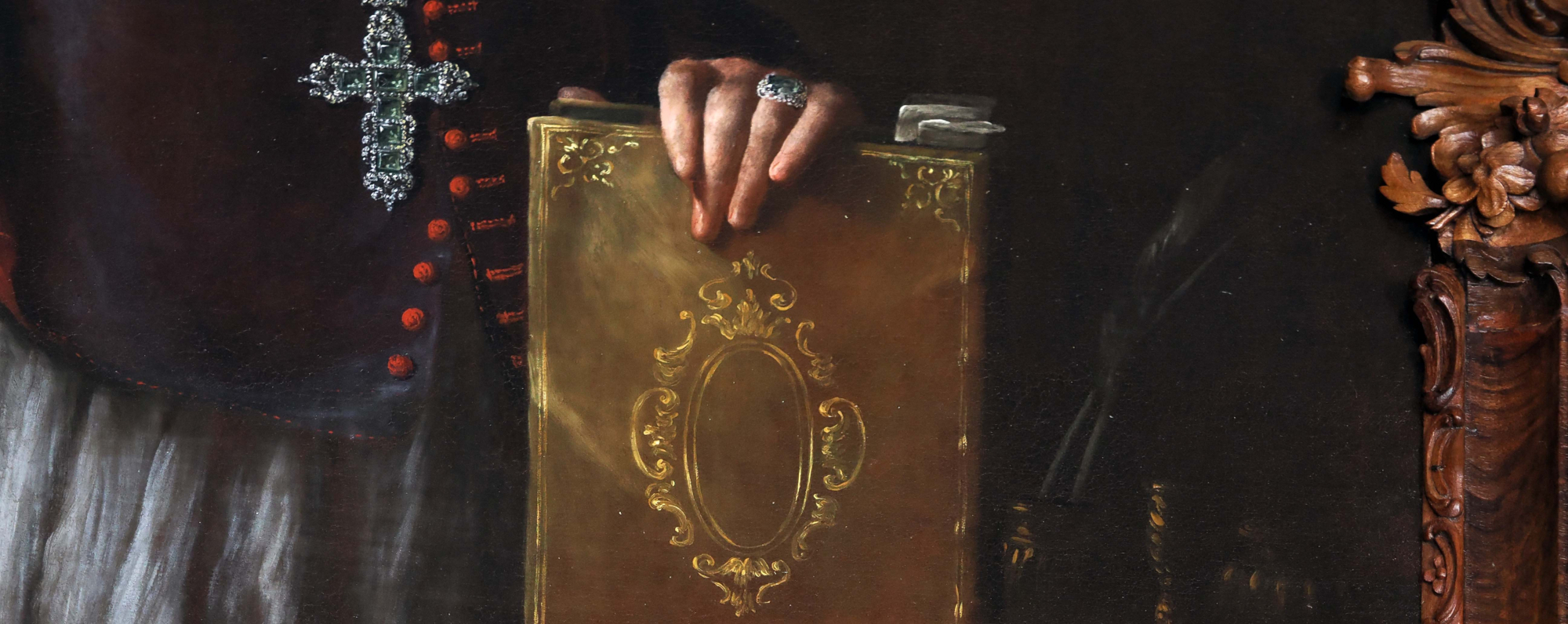The Veszprém Archdiocesan Library and Archives comprise two institutions with centuries of history, whose roots reach back nearly a thousand years to the founding of the Archdiocese of Veszprém, as well as to one of its most influential bishops of the 18th century.
The Archiepiscopal Library of Veszprém
Padányi Biró Márton, Bishop of Veszprém, 1751 – this handwritten inscription can be found in hundreds of volumes of the Archiepiscopal Library of Veszprém. The foundations of our institution were laid by this energetic 18th-century bishop, a patron of the arts and sciences, who decided to establish a library. The original collection of 607 volumes – compiled with the significant assistance of his Viennese agent, István Tessedik – was housed in a room next to the chapel of the episcopal residence in Sümeg.
His successor, Bishop Ignác Koller, built the episcopal palace in Veszprém, of which most beautiful parts is the library room on the upper floor of the north wing, beside the chapel. It was here that the bishop’s 1,671 volumes were arranged.

The development of the collection gained new momentum at the end of the 19th century under Bishop Károly Hornig. He had Padányi Biró Márton’s books brought to Veszprém and, with the help of his bookagents in Budapest and Vienna, greatly enriched the library with numerous new publications. By the time of his death, the library’s holdings exceeded 17,000 volumes. Between the two world wars, Bishop Nándor Rott appointed his master of ceremonies, Dr. Róbert Schwartz, as librarian in 1928, leading to the creation of the first author and subject catalogues after years of work.
The Archiepiscopal Library of Veszprém not only preserves and maintains the Episcopal Library but also the Chapter Library, rich in valuable and rare works acquired through the purchases and bequests of canons since the 18th century. The library of the diocesan seminary, founded in 1711, is also part of the institution. The core of this collection was transferred during the reign of Joseph II to Pozsony (today: Bratislava, Slovakia) and later to Pest, from where it was returned to Veszprém. Over the centuries, it continued to grow – one of its most valuable treasures being Migne’s Cursus patrologiae, both the Latin and Greek series. The library also preserves the musical core collection of the Veszprém Cathedral, containing valuable 18th–19th-century musical manuscripts and prints.

The collection includes 4 codices, 26 incunabula, 343 16th-century volumes (the so-called ʽantiqua’ books), 18th–19th-century periodicals, 116 Hungarica works, and 144 titles listed in the Régi Magyar Könyvtár (Old Hungarian Library), along with several valuable series such as directories and yearbooks.
With its 65,000 volumes, the Archiepiscopal Library of Veszprém serves as a public ecclesiastical reference library, dedicated to preserving and fostering the cultural heritage of the archdiocese, along with its printed and intellectual traditions.
Archives of the Archdiocese of Veszprém
In Veszprém, charters have been preserved since the foundation of the diocese – for more than a thousand years. Since the establishment of the Christian Hungarian kingdom, the Church has taken care to record its rights in writing and to preserve these documents, while certain ecclesiastical bodies, acting as places of authentication, issued officially recognized charters. One of the priceless treasures of our archives is the deeod of gift of Sir Guden, dated 1079, which bears witness to this tradition.
The Cathedral of Veszprém – whose sacristy housed the archives – suffered several fires and damages during the Middle Ages, resulting in the destruction of part of the documents. The episcopal archives and the chapter archives of the body of canons were separated in the 13th–14th centuries when the latter became an own legal entity. With the approach of the Ottoman threat, the two archives were also separated geographically: in 1544 the bishop placed his archives in Sümeg, while the chapter placed theirs in Sopron.
In 1628 Bishop István Sennyei restored the functioning of the chapter in Veszprém, and shortly afterwards resumed its activities as a place of authentication. The chapter’s archives were once again housed in the cathedral, where they remained until the early 20th century, later being moved to the canon houses in the castle, the Franciscan friary, and finally the episcopal palace.

An inventory of the early holdings of the chapter archives was made in 1781; its property records were organized and described in the 1850s, and in 1903 Dr. József Lukcsics archivist, diocesan priest revised the section containing the most valuable medieval charters. After 1948, the section of the chapter archives serving as a place of authentication was nationalized. Its contents were transferred in 1972 – along with the archives of other ecclesiastical institutions in the county – to the Veszprém County Archives. The other part of the chapter archives, the private archives of the body, came under the supervision of the episcopal archives in the late 1960s. In 1993, when the diocese was elevated to the rank of archdiocese, Archbishop Dr. József Szendi merged them with the episcopal archives.
The episcopal archives followed a different path: due to the Ottoman threat, the bishops resided in Sümeg until the episcopate of Ignác Koller, and so the archives only returned to Veszprém in the late 18th century, where they were placed in the episcopal palace. The last major change in the collection occurred in 1777, when the newly established dioceses of Szombathely and Székesfehérvár received parts of the documents from Veszprém corresponding to their territories. The history of the episcopal archives remained eventful in the 20th century: at the end of the Second World War, they suffered minor damage, and between 1951 and 1957 they were administered jointly with the county archives by state officials. In the 1960s they were declared as specialized archives, and in the same decade the National Catholic Collection Centre was established, tasked with coordinating the work of Catholic archives. An important step in preserving the archival materials was the restoration, under the direction of Dr. László Kredics, then episcopal librarian-archivist, of most of the medieval charters of the bishopric and the chapter between the late 1960s and early 1970s. Following changes in legislation, in the mid-1990s the ecclesiastical archives operating as specialized archives became public private archives.

